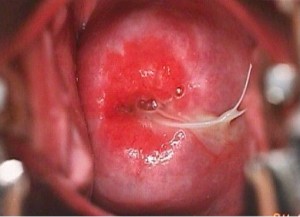Sooner or later, as many as 5% of all intrauterine devices will become infected.
Patients with this problem usually notice mild lower abdominal pain, sometimes have a vaginal discharge and fever, and may notice deep dyspareunia. The uterus is tender to touch and one or both adnexa may also be tender.

Treatment consists of broad-spectrum antibiotics. If the symptoms are mild and the fever low-grade, oral antibiotics (amoxicillin, cephalosporins, tetracycline, etc.) are very suitable. If the patient’s fever is high, the symptoms significant or she appears quite ill, IV antibiotics are a better choice (cefoxitin, or metronidazole plus gentamicin, or clindamycin plus gentamicin).
Should the infection not immediately respond (a day or two) to the antibiotics, the IUD should be removed.
IUDs can also be rejected without infection. Such patients complain of pelvic pain and possibly bleeding. On pelvic exam, the IUD is seen protruding from the cervix. It should be grasped with an instrument and gently removed. It cannot be saved and should not be pushed back inside.
